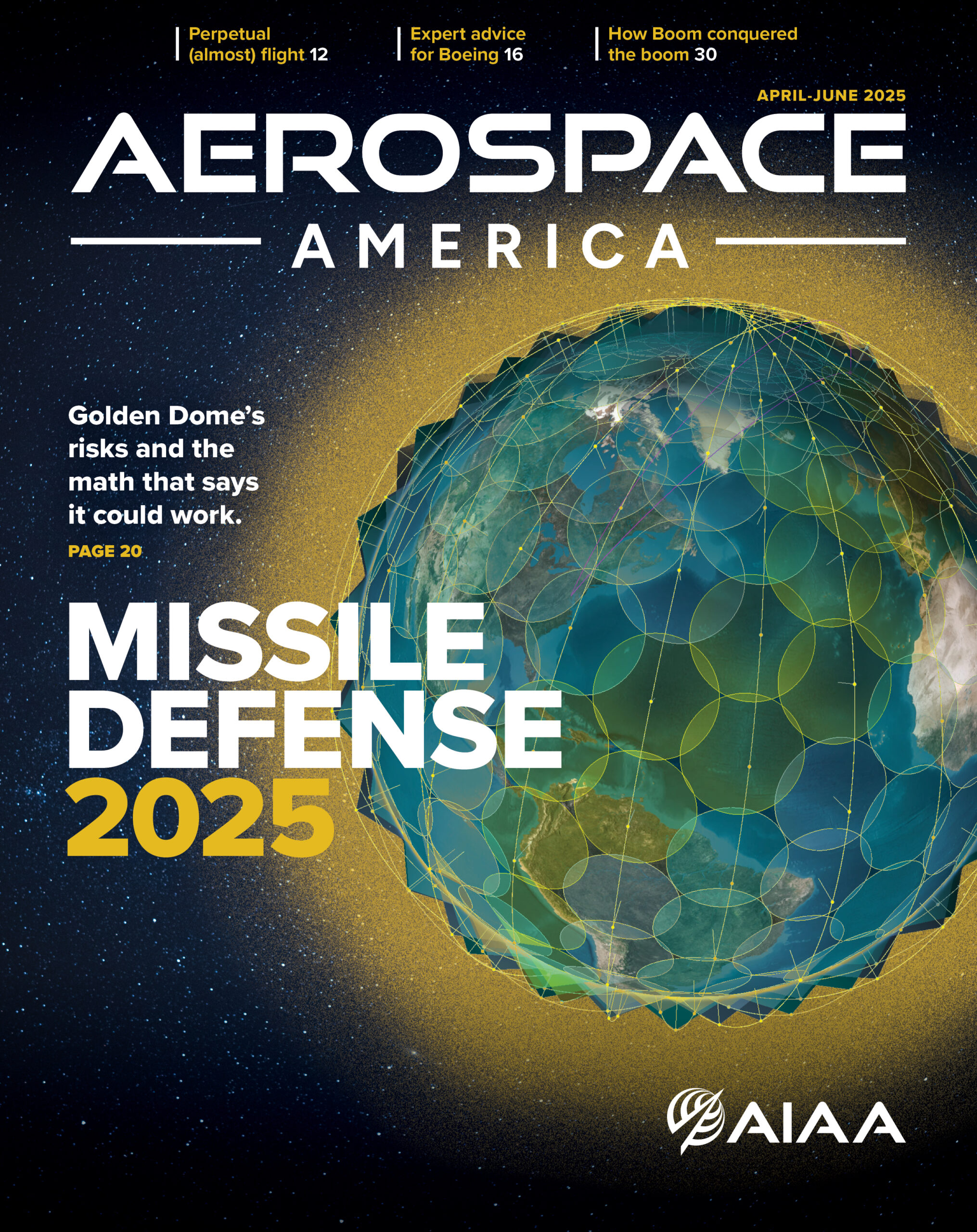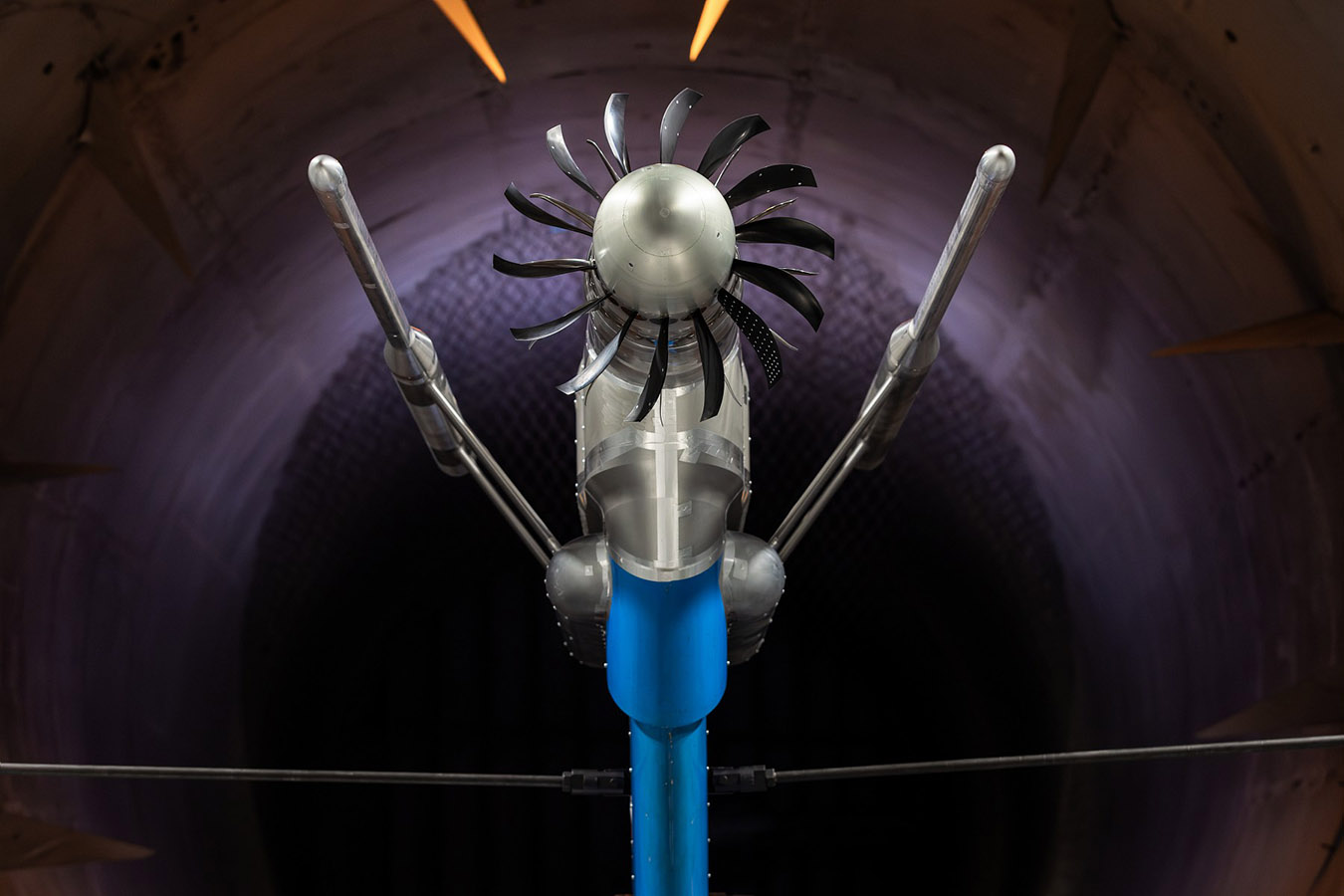Stay Up to Date
Submit your email address to receive the latest industry and Aerospace America news.
The Ground Testing Technical Committee focuses on evaluating aircraft, launch vehicles, spacecraft, structures and engines in wind tunnels and other facilities.
From December 2023 through May, the 5.2%-scale High Lift Common Research Model semispan model was tested in the National Transonic Facility at NASA’s Langley Research Center in Virginia. Researchers tested configurations for landing, takeoff and icing conditions between Mach 0.2 and 0.35, and chord Reynolds numbers between 1,800,000 and 30,000,000. With test results from Common Research Models, researchers compare different wind tunnels, improve computational fluid dynamics and increase wind tunnel testing knowledge.
In March, researchers integrated the Triple Annular Research Swirler model jet engine combustor, which features swirl-stabilized combustion and lean-direct injection of liquid fuels, into the atmospheric combustion facility at Lund University in Sweden. Commissioning was ongoing as of November, and bioderived fuel testing began in September to support the production and use of sustainable fuels for stationary gas turbines and jet engines.
In September, Ohio State University reintroduced its Large Area Reflected Shock tunnel for experimental hypersonics. The tunnel has a 114-centimeter-diameter nozzle and can generate clean air test conditions at flight enthalpies over Mach 8, with cold flow runs possible over Mach 10.
RUAG of Switzerland implemented a new test rig for propellers approximately 2 meters in diameter in its Large Wind Tunnel in Emmen. It delivers up to 400 kilowatts at a maximum speed of 2,700 revolutions per minute and yaws within a 110-degree range. There, Archer Aviation of California completed an extensive wind tunnel campaign, in which propellers for its Midnight air taxis were tested throughout their expected flight envelope.
In January, Safran Aircraft Engines said it had begun a 200-hour test campaign of the ECOENGInE, a 1:5-scale demonstrator of its planned Open Fan engine, at the French national aerospace research center’s wind tunnel in Modane, France. With the Open Fan design, Safran is targeting a 20% reduction of fuel burn and carbon dioxide emissions for the next generation of single-aisle commercial jets.
In June, Wisk Aero of California performed testing at Boeing’s Vertical/Short Take-Off and Landing Wind Tunnel in Pennsylvania to characterize the propellers for it sixth-generation air taxi design. Researchers measured thrust and torque, along with strain on blades and pitch links, to calibrate simulation and performance models.
In June, Lilium of Munich exercised its electric engines up to maximum thrust on its dual-engine propulsion unit test bench, to help verify safety of flight of its planned Lilium Jet aircraft. The company and its subsidiaries filed for insolvency in late October and early November, but Lilium says that construction of the first two prototypes continues.
At Texas A&M University, researchers planned to complete by the end of the year the first phase of the Ballistics Aero-optics and Materials Range, which includes a two-stage light-gas gun with a 10.2-centimeter diameter launch tube, a 30.5-meter free-flight range, a 257-meter-long guided flight range and a 419-meter-long directed energy range.
From February to March, NASA’s Stennis Space Center in Mississippi and Amentum of Virginia completed installation of the Sea-Level Plume Management System and in October an Interstage Simulator at the Thad Cochran Test Stand. The equipment is to help qualify the Exploration Upper Stage, a more powerful second stage for the Block 1B variant of NASA’s Space Launch System rockets.
At CFD Research in Alabama, researchers demonstrated tenths of pound per second mass flow rates of clean air at hypersonic enthalpies using nitrous oxide decomposition in the prototype wind tunnel, Puff. This tunnel and a larger version in development aim to introduce unprecedented ground testing capabilities in clean air matched to hypersonic flight enthalpies over mission-length durations and trajectories.
Contributors: Peter Aschwanden, Kyle Bokariza, Bora O. Cakir, Madeleine Finnegan, Roger Herdy, Sarah Langston, Jesse Little, Michael Lynch, Tyler McElroy, Melissa Rivers, Nathan Tichenor and Courtney Winski
Stay Up to Date
Submit your email address to receive the latest industry and Aerospace America news.




